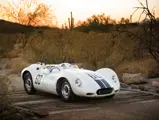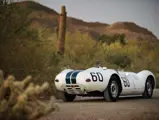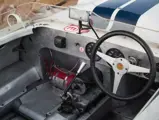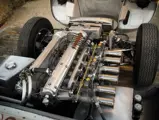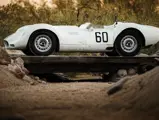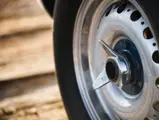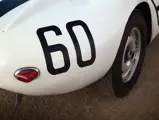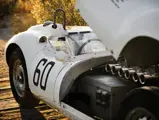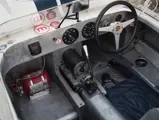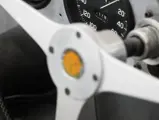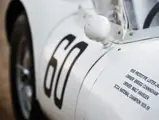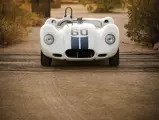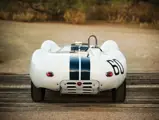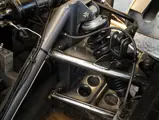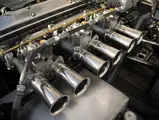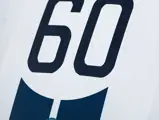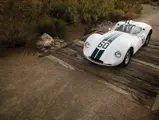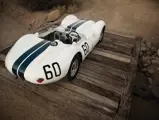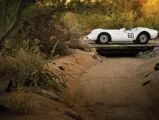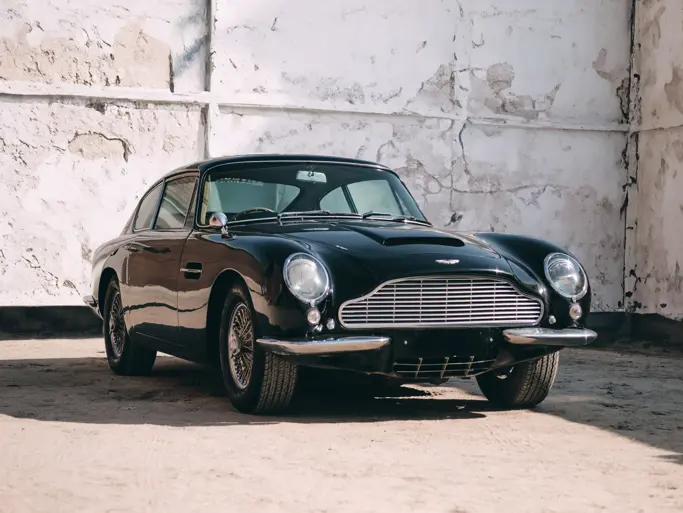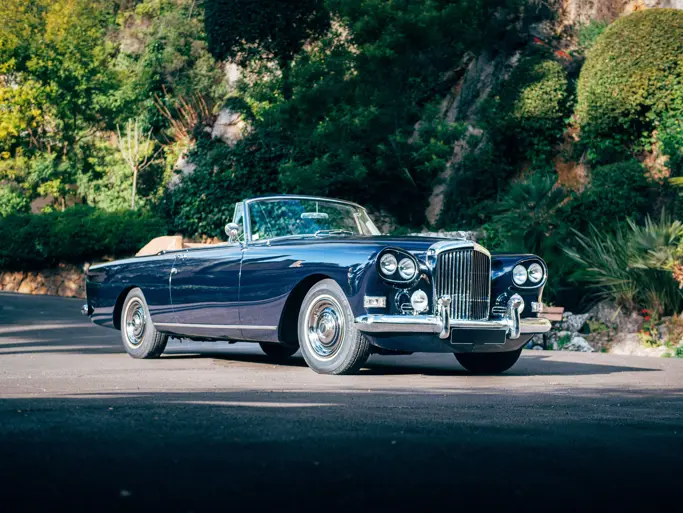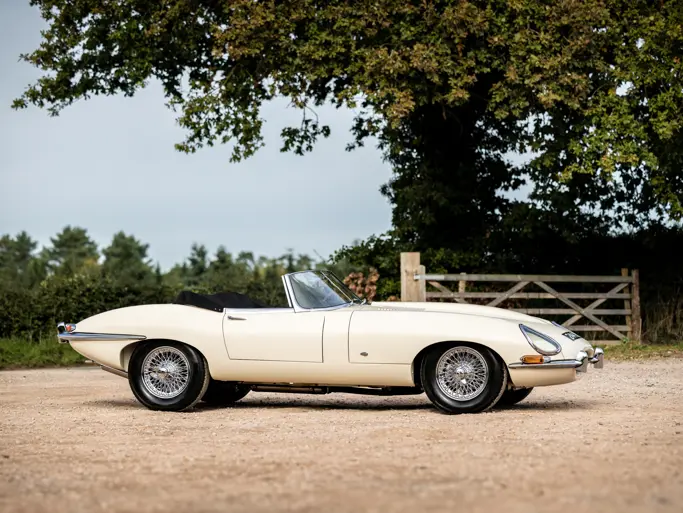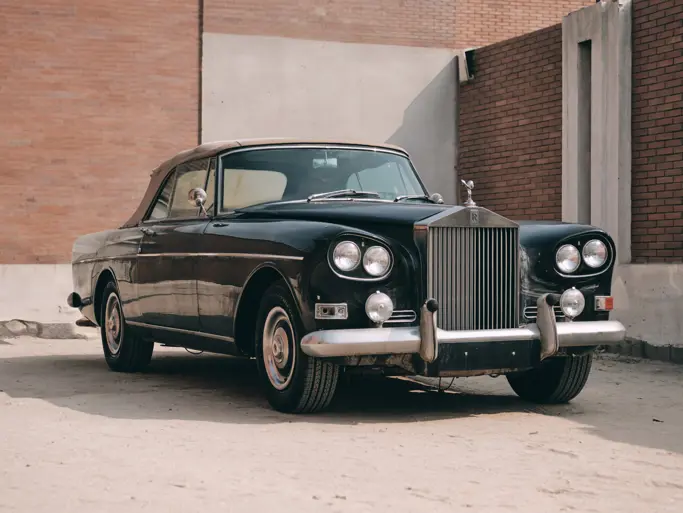Monterey 2013
1958 Lister-Jaguar 'Knobbly' Prototype
{{lr.item.text}}
$1,980,000 USD | Sold
 | Monterey, California
| Monterey, California
{{internetCurrentBid}}
{{internetTimeLeft}}

- The original Knobbly Lister-Jaguar prototype
- The Walt Hansgen Briggs Cunningham team 1958 SCCA World Championship car
- Well-known, clear history from new
- Offered in the U.S. for the first time in over 42 years
- Sold with a spare original Cunningham-prepared, 3.75-liter engine and FIA papers
- Built by a legend, for a legend, and driven by legends; unparalleled provenance
256 bhp, 3,785 cc double-overhead cam inline six-cylinder Jaguar engine, four-speed manual synchromesh transmission, coil-spring front suspension with parallel equal length wishbones, coil-spring rear suspension with de Dion tubular axle and four trailing arms, and Girling four-wheel disc brakes. Wheelbase: 90.75 in.
When one thinks of legendary racing cars of the late 1950s, words like sleek, sexy, and dramatic come to mind. Cambridge manufacturer Brian Lister’s offering was all of the above, but it found its groove in rather unique contours that nonetheless gave it the popular nickname “Knobbly.” Designed by Brian Lister to meet windshield height regulations set by the FIA, while also minimizing the frontal area of a car powered by a rather large three-liter Jaguar engine, its aluminum body featured a large central bump covering the engine, which fell off in wide grooves on either side and aft, and incredibly curvaceous streamlined fenders and headrest. The result was an athletic-appearing, distinctive racing car that took the sporting world by storm when it made its debut in February 1958.
The first Knobbly Lister-Jaguar, the very car shown to the motoring press at the Cambridge factory on that day, was this car, BHL EE 101; its unusual serial number resulted from the chassis having first been stamped “EE” for Ecurie Ecosse and then, to match the usual Lister pattern, overstamped with “BHL.”
This was the first automobile that Lister really marketed; his original plan was to build cars and race to advertise his father’s wrought-iron company, but the Knobbly struck him as an automobile that he could actually build and sell to make money. This car achieved a lot of publicity and was heavily photographed; it was prominently featured in the February 1958 issue of Autosport, appearing both on the cover and in a feature article within.
BHL EE 101 was one of two Jaguar-powered Knobblys ordered for the 12 Hours of Sebring by American sportsman par excellence, Briggs Cunningham, using a chassis that had originally been earmarked for the renowned Ecurie Ecosse racing team. Both cars were shipped to America and prepared by Cunningham’s technical director, Alfred Momo, of the Momo Corporation. Upon their arrival at Sebring for the September 12th race, they attracted much attention in their Cunningham team colors, pure white with blue stripes, and proved fierce competition to the other European exotica on the track, including Prancing Horses and the like. During those 12 hours, BHL EE 101 was co-driven by Archie Scott-Brown, Lister’s factory team ace, and American star Walt Hansgen. Running 5th in the first two laps behind the Aston Martins of Moss and Salvadori and the Ferrari TRs of Mike Hawthorn and Phil Hill, it was involved in a spectacular shunt on lap four. Olivier Gendebien was caught unawares by the Lister-Jaguar’s sudden deceleration due to a burned-out piston, and his Ferrari rode up the Knobbly’s tail, reportedly damaging Scott-Brown’s helmet and leaving a tire mark on the driver’s shoulder. The Lister-Jaguar was out of the race.
The three-liter XK engine proved itself to not be up to a challenge, so both Lister-Jaguars were re-engined after Sebring. According to Alfred Momo, BHL EE 101 was fitted with an exceptionally rare, experimental department, 3.75-liter engine with a twin-plug wide-angle head, heavily tuned and blueprinted by Momo’s magicians. Having shaken off its growing pains, BHL EE 101 set to the track in the SCCA National Championship, and there was no looking back.
Walt Hansgen had fallen in love with the Lister-Jaguar at Sebring, and on April 20, 1958, he won at Marlboro behind the wheel of this car; he finished 2nd at Danville, Virginia, on May 4, and then 1st over teammate Ed Crawford, in the other Cunningham Lister-Jaguar, in a second race, resulting in a 1-2 victory for the Florida team. They repeated that success at Cumberland on May 18th and again at Bridgehampton on June 1.
Hansgen racked up victories at Lime Rock on June 15 and at Elkhart Lake on June 22, with Crawford finishing 2nd in the latter event for a fifth 1-2 Cunningham finish for the 1958 season. A sixth 1-2 finish was scored back at Lime Rock on July 5, this time with Hansgen and BHL EE 101 taking the 2nd place position.
At this point, the Scarab-Chevrolets arrived on the scene, the first serious challenge to what had been, up to that point, the unbeatable Lister-Jaguar. Following unspectacular results at Montgomery, Alabama, on August 17 and at Thompson on September 1, both Lister-Jaguars reached success again at the Watkins Glen Grand Prix on September 20, with Crawford winning in number 61 and Walt Hansgen finishing 2nd in number 60. Hansgen scored his final win of the season at Virginia International Raceway on October 5. He had won more races there that season than the next top three finishers combined.
New engines were installed for 1959, and 2.4-liter Jaguar blocks were bored-out to three liters, yet another improvement. Unfortunately, in the 12 Hours of Sebring, where, a year before, the cars had found so much glory, Hansgen’s car spent over an hour in the pits, having its fractured de Dion rear axle replaced, and then it blew a tire. It finished 12th. Hansgen’s Lister finished 2nd with a 3.8-liter mill at Marlboro on April 19th, again in SCCA competition, but it won at Danville on May 3 and at Cumberland on May 17. Hansgen co-drove with Connecticut legend John Fitch at Bridgehampton on May 31, capturing another victory, but it failed at Lime Rock on July 4th and finished 2nd, this time co-driven by Phil Forno, at Montgomery on August 9th.
The Lister-Jaguar wasn’t through, yet. Hansgen scored a win at Thompson Raceway on September 7, co-driving with Ed Crawford at the Road America 500 at Elkhart Lake on September 13 and at the Watkins Glen Grand Prix on September 26. It finished 2nd, with Hansgen at the controls, at the SCCA National at Daytona on November 15.
The cars ran three more times in the 1960 season, with John Fitch and Briggs Cunningham finishing 5th and 9th in the cars at Bridgehampton on May 29; one failed to finish in that year’s Road America 500, driven by Cunningham, Ed Hugus, and Phil Horno, and one ranked 6th at Watkins Glen on September 24.
Cunningham kept BHL EE 101 until the mid-1960s, when it was sold out of storage to American enthusiast Herb Wetson. It was then passed in the early 1970s to Chris Drake, who drove it extensively in vintage racing before selling it to David Preece. It then passed in the early 1980s to another vintage driver, Roger Williams, and then to Andrew Baber.
During its early Cunningham years, BHL EE 101’s original bonnet was replaced by the later “short bonnet” style, in keeping with the Lister factory’s latest practice; the fenders were modified by Momo, along the lines of the Ecurie Ecosse cars, to eliminate front-end lift at high speeds that had plagued the cars early on. Williams had a new bonnet built for the car during his ownership, and the bulkhead behind the driver was rebuilt for increased seating support. The original chassis frame underneath remains original, as it was found to be in good order, and it retains its original existing under-trays; the rear body panels are original, from when it was modified by the Cunningham team. The car boasts Le Mans-style Lucas headlights that were designed for rapid changes of burnt-out bulbs.
The chassis was refinished, and the dashboard was restored to very near its original 1958 design. It retains its original Girling racing calipers, with quick pad-change calipers mounted at the rear, as well as nearly all of the early Cunningham/Momo modifications, such as rear jacking points on the chassis, a roll bar, the oil tank cover, and the original 42-gallon fuel tank. Under the hood is a wide-angle head, dry-sump engine, sending its power through a four-speed manual synchromesh transmission.
Importantly, the car will be supplied with an extraordinarily rare, Cunningham-prepared, 3.75-liter Jaguar racing engine, as was fitted to this car by the Cunningham team in period, freshly rebuilt with a billet crankshaft, forged pistons, and other full-bore track equipment. With its “3.75” cast on the side of the block, this engine is in itself a valuable acquisition, and the new owner will have the option of reinstalling it in the car for added unbeatable authenticity on the show field.
The car that appeared in period in Autosport and on the cover of racing programs has continued to be well known. It was the subject of a feature article in Hemmings Sports & Exotic Car in November 2012, and it takes up several pages in Paul Skilleter’s landmark work, Lister-Jaguar: Brian Lister and the Cars from Cambridge, which gives this car, because of its special status as the prototype Knobbly, extensive coverage.
If it had only been “the original Knobbly,” this Lister-Jaguar would be special enough, since there were only 11 of these cars originally built. But this car also tore its way through history, run by Walt Hansgen through a long roster of fabulous successes that carried him to the SCCA World Championship. Racing in the late 1950s, this was the car to beat. Along the way, it was blessed by Briggs Cunningham and Alfred Momo’s intensive care and engineering, and it was driven by two other American legends, Ed Crawford and John Fitch, as well as by Briggs himself and “Maestro” Archie Scott-Brown, the most famous Lister driver of all. Few surviving racing cars of its era claim such well-known history with such fascinating characters, making this car, offered in the U.S. for the first time in 42 years, an ideal cornerstone for any collection of 1960s sporting legends.

